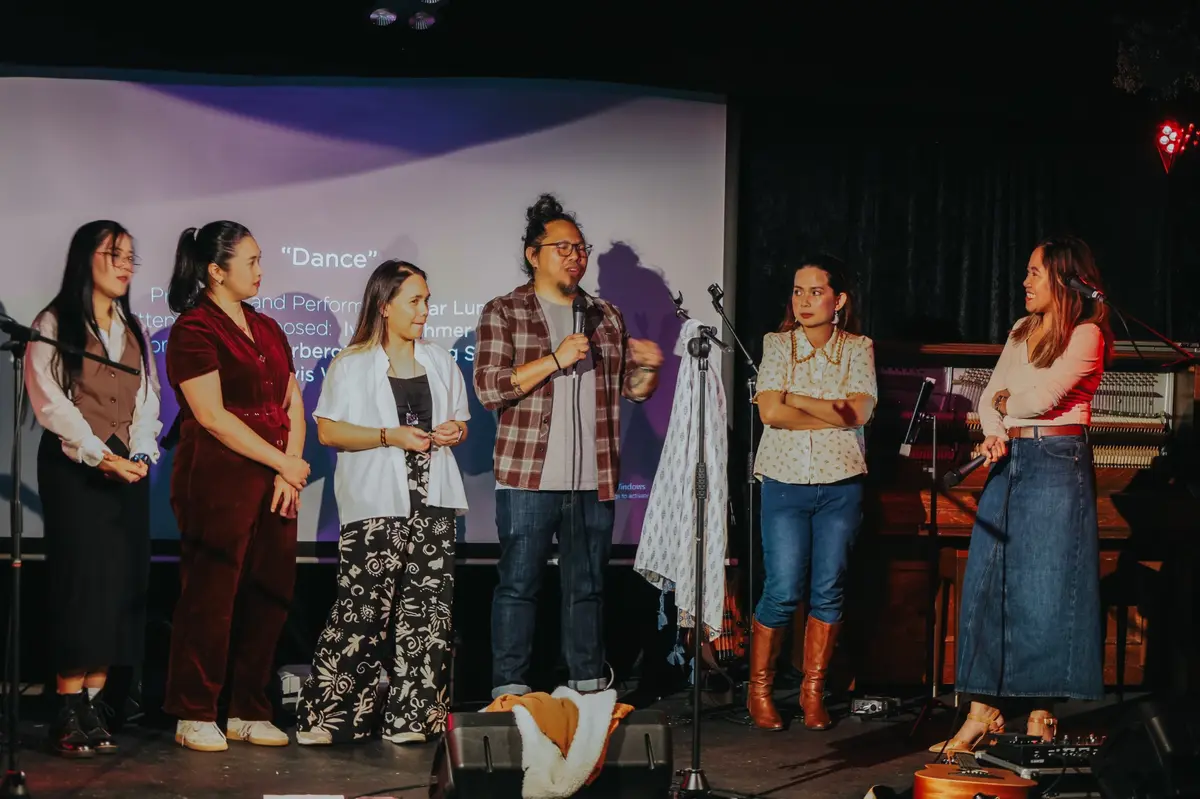Over lunch of rice, soup, fish, and vegetables at my sister’s house in Paranaque, Philippines, I found myself explaining to the family’s caregiver what a sandwich was like in the U.S. where I live. Needless to say, I had a tough time. Although the word “sandwich” means the same in both places, I could not get the imagery of eating sandwich for lunch across.
Using local references did not help. The preferred soft texture, shape, and serving size of a typical Filipino bread like “pandesal” made it ideal as a “merienda” or mid-day snack food but not as a meal. Eating a sandwich for lunch was unthinkable. Besides, breakfast-lunch-dinner to Filipinos is not a meal without rice. Americans, on the other hand, cannot imagine snacking on a sandwich between meals. Explaining food culture can be challenging. A new release from Netflix seems to bypass those hurdles.
Netflix dropped, “I love Filipino,” a series of five episodes for U.S. members in June. Starring host Jiggy Manicad, the “I” in the title, the series featured documentary type one-on-one interviews and somewhat romanticized dramatizations. The first episode of the series, “Pinoy Altanghap (Filipino Breakfast-Lunch-Dinner),” featured Filipino everyday fare. The food theme returns in episode four, “Sawsaw Juan.” The title mashed up the Tagalog words “sawsawan,” which translates to “dipping sauce,” and “Juan,” the moniker for the Filipino man on the street.
The show’s format is expository. Rather than entertain viewers with what’s exotic to non-Filipinos, the series focused on food history, current trends, and outlook. The first episode skipped over popular cable TV food-travel show’s penchant for featuring the shocking or the bizarre. No American celebrity chef, like the late Anthony Bourdain, or actors like Stanley Tucci and Eva Longoria, sampled cuisine that’s new to them. The “mukbang” beat of extreme eating to impress, a staple among YouTube vloggers like Mark Wiens, was not deployed either. Although Netflix promoted the series as a “journey to celebrate all things Filipino,” the two episodes on food barely showed the host sampling, cooking, or describing food. Instead, he interviewed Filipino chefs and food historians. These experts talked about Philippine culinary traditions. So, the “I” in the “I Love Filipino” series title refers to them too.
Audience
The first episode overcame any cross-cultural communication challenges in showcasing food culture by speaking mainly to the Filipino audience — those living in the country and overseas. While this perspective felt fresh, the strategy could be missing a great opportunity. A global streaming platform like Netflix opens access to international markets and a much wider viewership. So, watching Filipino chefs and food historians identify the flavor preferences of their fellow Filipinos felt a little dissonant.
For someone watching in the U.S., with Netflix’s global reach in mind, this approach seemed rather exclusive. But it must be deliberate. Perhaps part of the writers’ goal is to ask younger Filipinos, raised on international fast-food, to give their motherland’s cuisine a second look. Also intended as viewers must be Filipino emigrants, generations of Filipino descent born abroad, and Filipino workers making a living there with their families in tow.
Not surprisingly, food historian Felice Prudente Santa Maria acknowledged “diaspora cooking” in her interview. She relayed that Filipinos living in Alaska cooked “Sinigang” using available ingredients, like salmon head, to satisfy cravings for home. She noted with delight that this version of the everyday Filipino sour soup has made its way to the home country, a market for fish head commonly discarded in the U.S.
Also featured in this episode, complete with dreamy dramatization, was talk of the “food shaming” admittedly experienced by children born to Filipino immigrant parents in the U.S. Citing the writings of Filipino Americans themselves, Chef Claude Tayag said that the “embarrassment” stemming from an immigrant family’s desire to assimilate is one reason for the “lack of interest” in Filipino cuisine. And could explain why Americans remain unfamiliar with Filipino food beyond “lumpia” spring roll or “pancit” stir fried noodles. Mainstreaming Filipino restaurant fare stays also elusive in most States. According to the chef, however, this hesitation to claim Filipino identity is turning around, thanks to the new generation. As such, Chef Tayag, like others before him, declared that the decade has come for Filipino food to flourish.
After watching the first episode twice, I am led to wonder. Does the series seem too inward-looking, like cultural navel-gazing? The host and producer, Jiggy Manicad, asked fellow Filipino experts what the Filipino palate was like before the Spaniards arrived and what Filipino food represented now. So, I ask if this reckoning had not been done and documented before.
Nevertheless, “I Love Filipino” deserves praise for exploring questions on cultural identity. Streaming may have opened every corner of the Philippine’s 7,641 islands to the world. But the democratization of publication and digital content creation can also amplify bias. It inadvertently made storytelling vulnerable to opinion mongering, click baiting, and sometimes, cultural appropriation. I once read a tourist’s YouTube video title proclaiming “Kare-Kare” as the Filipino version of an Indian curry. But “curry” itself is a word coined by the British. As such, any attempt by Filipinos to showcase their own tastes, textures, and smells is to be celebrated.
Language and Telling the Story
YES, finally, here is a documentary, “I Love Filipino,” on Philippine culture as told by Filipinos. To me, nothing can top telling one’s story in one’s own voice and language. Contemporary colloquial Filipino and English (Taglish) languages spoken by interviewees meshed with the host’s questions scripted in formal Filipino. That said, a little more care should be paid to translation. Like the “sandwich” example above, words borrowed from colonial languages, like American English and Spanish, often require cultural translation.
Words describing ingredients, flavors, and sensations may not be readily translated. For example, “malinamnam” can be better understood as the Japanese word, “umami,” especially by food show viewers. The English word “savory” used in the show’s caption commonly refers to food that is “not sweet” in the U.S. “Savory” is also not descriptive of food seasoned with salt in the Philippines. To my recollection, Filipinos assign “salty” to food preserved with salt like dried fish, fish sauce, or fermented shrimp paste. But “salty” cannot be the word either.
“Ulam” is another word that defies cultural translation because of the difference between Filipino and American meal patterns. In the Filipino way of eating, rice is the star and not a side dish. No explanation of “ulam,” or dishes that enhance eating rice, was made in this food episode. Perhaps the writers assumed that eating rice with ulam was universal. A simple presentation of the basic Filipino meal pattern would explain to the unfamiliar why the featured “Sinigang” sour soup made with chunks of corned beef is a delightful melding of flavors, not an off putting mishmash. After all, soups are not just starters, they are ulam (viand) to the unflavored white rice. Non-Filipino viewers may better appreciate the idea of eating garlic fried rice, traditionally made with leftover rice, for breakfast. As presented in the show, fried rice or “Sinangag” topped with a fried egg (“itlog”) pairs well with an ulam of Filipino sweet-tangy-salty cured meats or vinegar-marinated “Bangus” milkfish in a “Silog” plate. Breakfast in the Philippines is not a meal without rice.
Manifesting the Decade of Filipino Food
Intelligible description of what constitutes a Filipino meal is invaluable. Communicating with pride to the rest of the world the unique and desirable attributes of Filipino cuisine benefits everyone. Investors and restauranteurs gain from the patronage of Filipino restaurants in global markets. More importantly, any financial windfall from the widespread consumption of Filipino food positively impacts food product manufacturers and farmers in the Philippines. Plus, some understanding rather than total confusion piques curiosity that could lead to more food tourism.
What the “I Love Filipino” first episode on food accomplished, however, was sort out questions on Filipino culinary heritage among Filipinos. The more clarity there is on Filipino food, the easier it is to embrace its uniqueness. Confidence, if not pride, in one’s food culture identity makes it less painful to tweak its dishes or presentation to fit certain meal patterns and menu formats already familiar to the non-Filipino diners. The gain from wider acceptance can be reaped even as the core of Filipino eating traditions remain intact.
This series, like others, may have been produced for entertainment, but “I Love Filipino,” demonstrated that reclaiming pride in one’s heritage can only come from intimate knowledge. So, documentation is key. Keepers of culture need to document traditions for future generations. Regional and local recipes, ingredients, cooking techniques, and culinary practices at home and restaurants can easily be forgotten or lost to the homogenizing effects of the global food industrial complex. In fact, delicacies made from ingredients that are now rare or unpopular can themselves become extinct, if left undocumented.
About the Author:
 George Banez is a writer of Filipino descent and is a retired non-profit professional living in Florida.
George Banez is a writer of Filipino descent and is a retired non-profit professional living in Florida.











